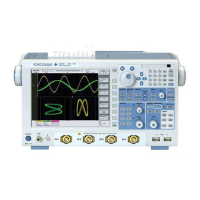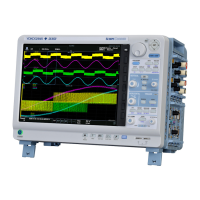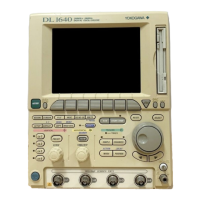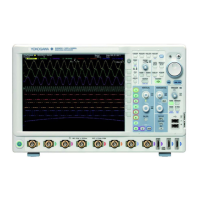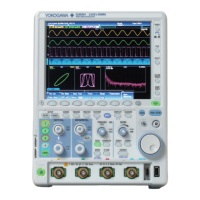Upper-Level Query
An upper-level query is a query in which a question
mark (
?
) is appended to the highest level command
of a group. Execution of an upper-level query allows
all settings that can be specified in the group to be
received at once. Some query groups which are
comprised of more than three hierarchical levels can
output all the lower level settings.
Example
:ACQUIRE? -> :ACQUIRE:AVERAGE:
COUNT 2;EWEIGHT 16;:ACQUIRE:
HRMODE 0;INTERLEAVE 0;
INTERPOLATE 1;MODE NORMAL;
REPETITIVE 0;RLENGTH 12500
The response to an upper-level query can be
transmitted as a program message back to the
instrument. In this way, the settings that existed when
the upper-level query was made can be restored.
However, some upper-level queries do not return setup
information that is not currently in use. It is important
to remember that not all the group’s information is
necessarily returned as part of a response.
Header Interpretation Rules
The instrument interprets the header that is received
according to the rules below.
• Mnemonics are not case sensitive.
Example “
CURSor
” can also be written as “
cursor
”
or “
Cursor
.”
•
The lower-case section of the header can be
omitted.
Example “
CURSor
” can also be written as “
CURSO
”
or “
CURS
.”
•
The question mark (
?
) at the end of a header
indicates that it is a query
. The question mark (
?
)
cannot be omitted.
Example
The shortest abbreviation for
CURSor?
is
CURS?
.
•
If the <x> (value) at the end of a mnemonic is
omitted, it is interpreted as a 1.
Example If “
CHANnel<x>
” is written as “
CHAN
,” it
means “
CHANnel1
.”
•
The section enclosed by braces (
[]
) can be
omitted.
Example
HISTory[:CURRent]:MODE
can also be
written as
HIST:MODE
.
However
, the last section enclosed by braces (
[]
)
cannot be omitted in an upper-level query.
Example “
HISTory?
” and “
HISTory:CURRent?
”
are different queries.
4.2 Commands
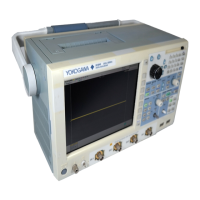
